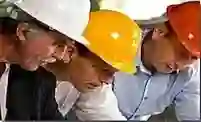Safeguarding Equipment and Protecting Workers from Amputations
How it Work!
- Register first and log into your account. Study and take the quiz for FREE until passed.
- After passing the quiz, follow the page, pay for the course and print your certificate.
Course Summary
Amputations are among the most severe and disabling workplace injuries. They are widespread and involve various activities and equipment. (The U.S. Bureau of Labor Statistics 1996 annual survey indicated that there were approximately 10,000 amputations for all industry sectors.) About one half of all workplace amputations occur in the manufacturing sector and the rest occur across the construction, agriculture, wholesale and retail trade, and service industries. These injuries result from using stationary machines such as saws, presses, conveyors, and bending, rolling, or shaping machines as well as from powered and non-powered hand tools, forklifts, doors, and trash compactors; and during materials handling activities.
Learning Objectives
As an employer, this information will help you protect your employees. It will help you and your employees recognize, manage, and control the potential hazards of the stationary machines in your workplace. The information does not cover all equipment associated with amputation or amputation hazards in maritime and agriculture operations. The first two sections of the document, Recognizing Amputation Hazards and Controlling Amputation Hazards, look at sources of amputations and how to safeguard machinery. The section on Specific Machinery, Hazards, and Safeguards deals with the hazards and safeguarding methods for the equipment most frequently associated with workplace amputations: mechanical power presses, power press brakes, shears, food slicers, meat grinders, meat-cutting band saws, drill presses, milling machines, grinding machines, and slitting.
Course Author
OSHA
Review the quiz before studying the course.Certificate of completion of the course
This course comes with a multiple-choice quiz. You can view the quiz and take the quiz if you are logged in your account. You can take the quiz for this online PDH course as many times until passed. The passing grade is 70% and above. After you pass the quiz simply follow the page, to pay for the course and print your certificate instantly. A copy of the certificate and receipt for this course will always be in your account.Acrobat Reader is required to view this document. Click here to download a free copy of Acrobat Reader.
This online PDH course can also be used as a continuing education course for the following.

